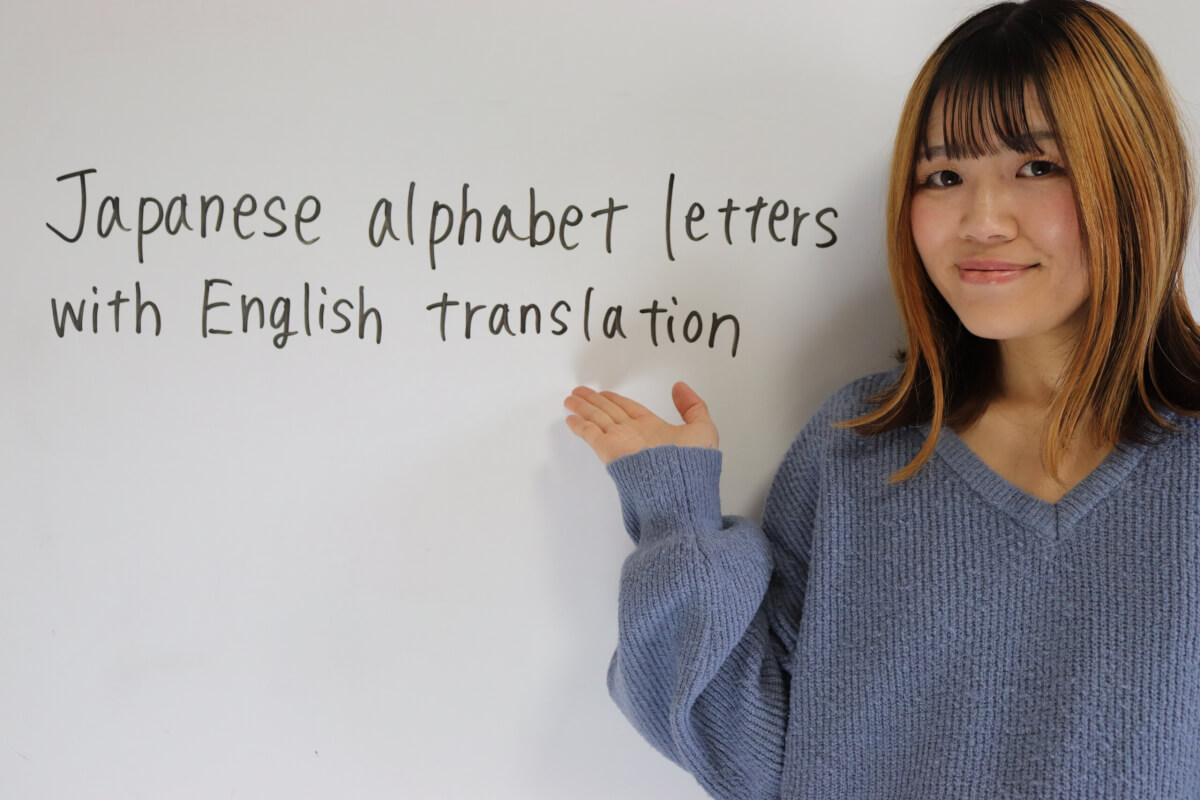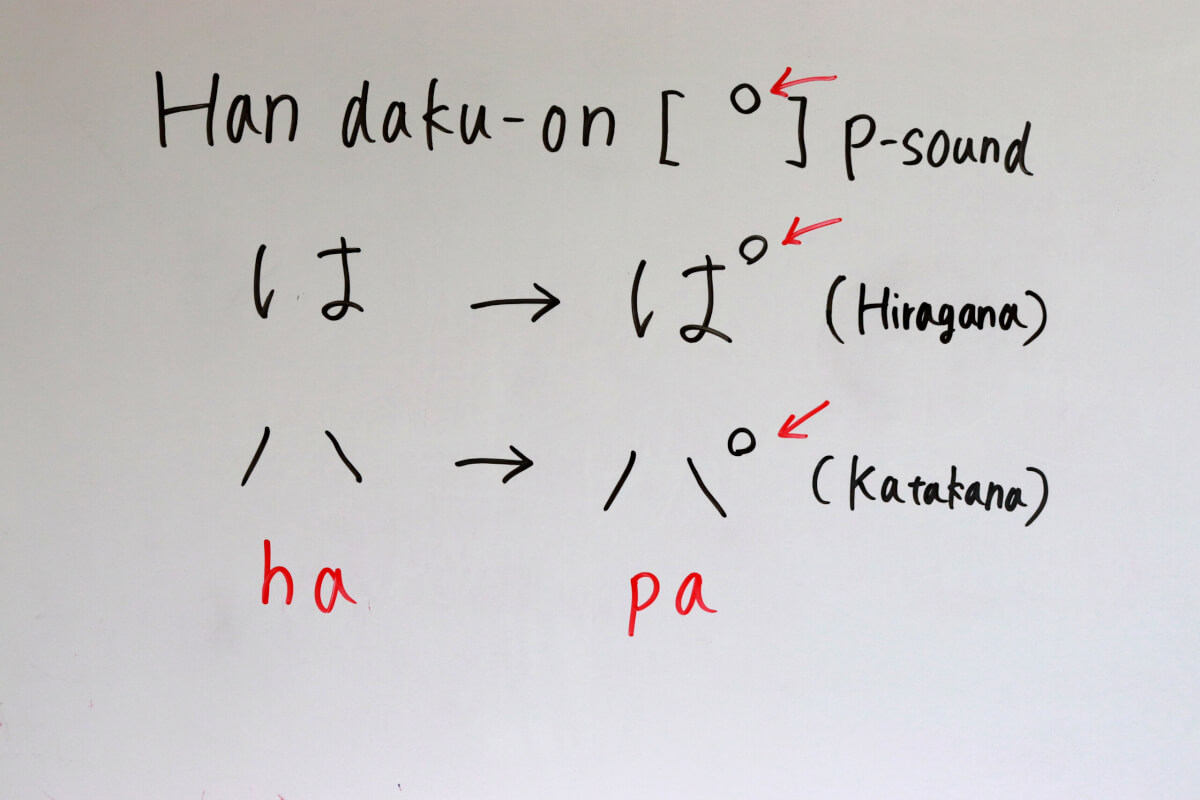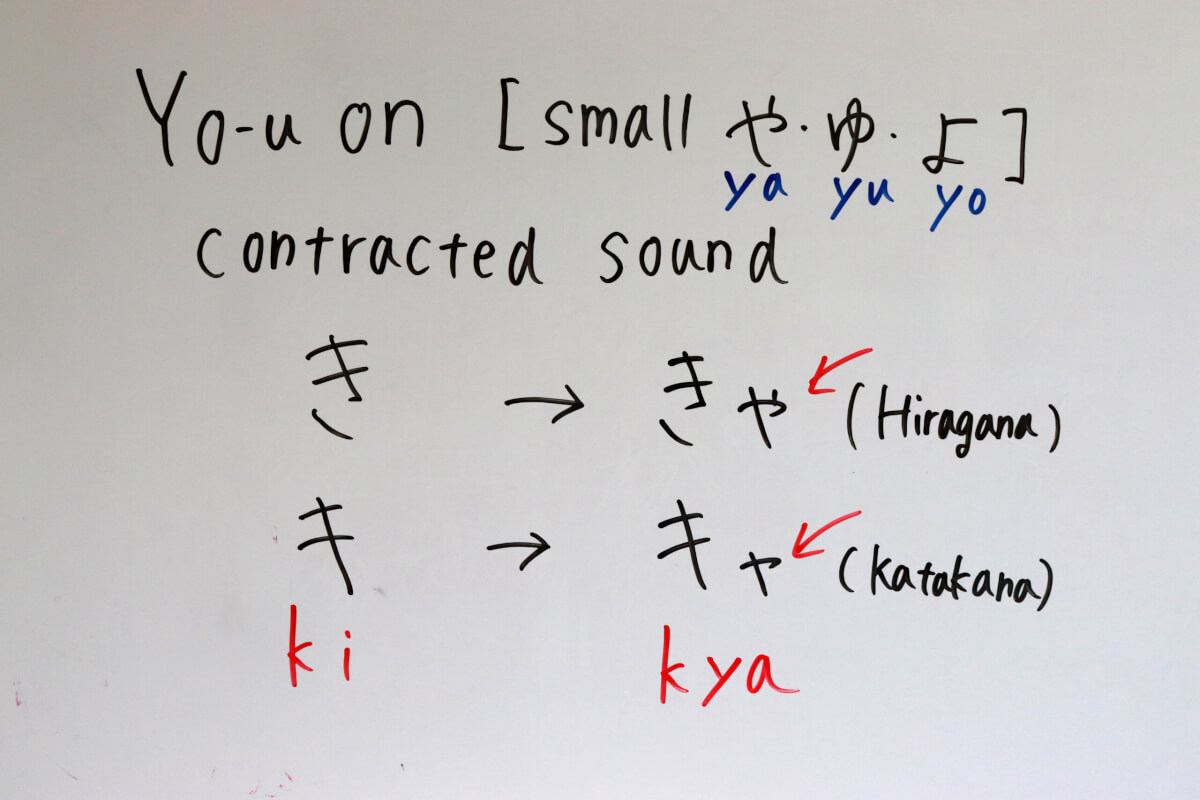- Release Date:
Japanese alphabet letters with English translation

When you learn Japanese characters, learn how to read them together.
Since Japanese and English pronunciations are different, we will also show you how to pronounce them in English alphabet. This Japanese reading of the characters is also called "romaji"(ro-o-ma-ji). While the best way to learn Japanese is through the Japanese script, but for English speakers, romaji will help at first.
Japanese alphabet romaji charts
There are three types of Japanese alphabets. They are Hiragana, Katakana, and Kanji. Hiragana and Katakana have 46 sounds each, but the pronunciation of each is the same. I'll also show kanji in beginner level.
An alphabet chart of Hiragana and Katakana

In the following chart, the upper row is Hiragana, the middle row is Katakana, and the lower row is pronunciation in English(romaji).
| A | I | U | E | O |
|---|---|---|---|---|
| あ ア /A/ | い イ /I/ | う ウ /U/ | え エ /E/ | お オ /O/ |
| か カ /KA/ | き キ /KI/ | く ク /KU/ | け ケ /KE/ | こ コ /KO/ |
| さ サ /SA/ | し シ /SHI/ | す ス /SU/ | せ セ /SE/ | そ ソ /SO/ |
| た タ /TA/ | ち チ /CHI/ | つ ツ /TSU/ | て テ /TE/ | と ト /TO/ |
| な ナ /NA/ | に ニ /NI/ | ぬ ヌ /NU/ | ね ネ /NE/ | の ノ /NO/ |
| は ハ /HA/ | ひ ヒ /HI/ | ふ フ /FU/ | へ ヘ /HE/ | ほ ホ /HO/ |
| ま マ /MA/ | み ミ /MI/ | む ム /MU/ | め メ /ME/ | も モ /MO/ |
| や ヤ /YA/ | ゆ ユ /YU/ | よ ヨ /YO/ | ||
| ら ラ /RA/ | り リ /RI/ | る ル /RU/ | れ レ /RE/ | ろ ロ /RO/ |
| わ ワ /WA/ | を ヲ /WO/ | |||
| ん ン /N/ |
"Daku on" voiced sound [゛]

Some hiragana have two dots [゛] in upper right. The sound is more muffled than the original pronunciation. For example, か: "ka" becomes が: "ga" when it is with [゛]. There are 20 sounds in the 46 syllables of hiragana that become a muffled sound.
| A | I | U | E | O |
|---|---|---|---|---|
| が ガ /GA/ | ぎ ギ /GI/ | ぐ グ /GU/ | げ ゲ /GE/ | ご ゴ /GO/ |
| ざ ザ /ZA/ | じ ジ /ZI/ | ず ズ /ZU/ | ぜ ゼ /ZE/ | ぞ ゾ /ZO/ |
| だ ダ /DA/ | ぢ ヂ /DI/ | づ ヅ /DU/ | で デ /DE/ | ど ド /DO/ |
| ば バ /BA/ | び ビ /BI/ | ぶ ブ /BU/ | べ ベ /BE/ | ぼ ボ /BO/ |
"Han daku on" P-sound [゜]
The rounded [゜] is called "handaku on": P-sound. The "p" sound is added to the original sound in upper right. For example, は: "ha" becomes ぱ: "pa" when it is with [゜].

| A | I | U | E | P |
|---|---|---|---|---|
| ぱ パ /PA/ | ぴ ピ /PI/ | ぷ プ /PU/ | ぺ ペ /PE/ | ぽ ポ /PO/ |
"You on" contracted sound [small ゃ・ゅ・ょ]

There are 36 sounds in you on. Small ゃ/ya・ゅ/yu・ょ/yo are followed by some alphabets. For example, き: "ki" is followed by a small "ya" to form the sound きゃ: "kya".
| YA | YU | YO |
|---|---|---|
| きゃ キャ /KYA/ | きゅ キュ /KYU/ | きょ キョ /KYO/ |
| ぎゃ ギャ /GYA/ | ぎゅ ギュ /GYU/ | ぎょ ギョ /GYO/ |
| にゃ ニャ /NYA/ | にゅ ニュ /NYU/ | にょ ニョ /NYO/ |
| びゃ ビャ /BYA/ | びゅ ビュ /BYU/ | びょ ビョ /BYO/ |
| しゃ シャ /SHA/ | しゅ シュ /SHU/ | しょ ショ /SHO/ |
| じゃ ジャ /JA/ | じゅ ジュ /JU/ | じょ ジョ /JO/ |
| ひゃ ヒャ /HYA/ | ひゅ ヒュ /HYU/ | ひょ ヒョ /HYO/ |
| ぴゃ ピャ /PYA/ | ぴゅ ピュ /PYU/ | ぴょ ピョ /PYO/ |
| ちゃ チャ /CHA/ | ちゅ チュ /CHU/ | ちょ チョ /CHO/ |
| じゃ ジャ /DYA/ | じゅ ジュ /DYU/ | じょ ジョ /DYO/ |
| みゃ ミャ /MYA/ | みゅ ミュ /MYU/ | みょ ミョ /MYO/ |
| りゃ リャ /RYA/ | りゅ リュ /RYU/ | りょ リョ /RYO/ |
An alphabet chart of Kanji
There are 2,136 common used kanji characters. You do not need to memorize all of them. Let's look at 30 beginner-level kanji this time.

| 一 /ICHI/ "one" | 二 /NI/ "two" | 三 /SAN/ "three" | 四 /SHI, YON/ "four" | 五 /GO/ "five" |
| 六 /ROKU/ "six" | 七 /NANA, SHICHI/ "seven" | 八 /HACHI/ "eight" | 九 /KYUU/ "nine" | 十 /JUU/ "ten" |
| 百 /HYAKU/ "hundred" | 千 /SEN/ "thousand" | 万 /MAN/ "ten thousand" | 人 /HITO, JIN/ "people" | 子 /KO/ "child" |
| 男 /OTOKO/ "man" | 女 /ON-NA/ "woman" | 父 /CHICHI/ "father" | 母 /HAHA/ "mother" | 時 /JI, TOKI/ "time, hour" |
| 分 /FUN, PUN/ "minute" | 秒 /BYOU/ "second" | 朝 /ASA/ "morning" | 昼 /HIRU/ "noon" | 夜 /YORU/ "night" |
| 今 /IMA/ "now" | 体 /KARADA/ "body" | 口 /KUCHI/ "mouth" | 目 /ME/ "eye" | 耳 /MIMI/ "ear" |
How to download PDF files?
Hiragana and Katakana charts are included in our "Power Up Your Japanese" ebook. All courses come with romaji, so even those who have not yet learned hiragana and katakana can see how to read English by looking at the romaji.
This ebook includes a video on how to write hiragana and katakana with pronunciation by Mari sensei, Japanese native speaker. You can also study grammar, vocabulary, and conversation. This is ideal for those who are just beginning to learn Japanese.
How to learn the Japanese alphabet?
The Japanese language has three alphabets, all very important. Kanji, in particular, is the core of the Japanese language and the most important. However, we do not recommend learning from Kanji. There are many of them, and in order to read Kanji, you need to know Hiragana first.
If you are planning to learn Japanese, study hiragana and katakana firstly. Then, study Kanji little by little; you do not need to memorize all 2,136 Joyo Kanji, and not all Japanese people know all of them.
The number of kanji you need to know depends on your purpose, whether you want to study or work in Japan. If you are a beginner, please aim to learn 100 kanji first.
It is a really classic way to learn each letter of the alphabet, but the best way is to learn by writing. Nowadays, you can also practice writing on a tablet. You can learn the shapes and how to write them by writing them repeatedly.
How long does it take?
My students learn hiragana and katakana in an average of one month. Then, take time to study Kanji characters. Studying Kanji characters takes time actually. Even Japanese children take 9 years of compulsory education to study Kanji.
However, I don't think people who learn Japanese can spend that much time, so I suggest that you decide on your own, to memorize 10 kanji a week or something. And I recommend that you learn kanji in parallel while studying grammar and other parts of course.
